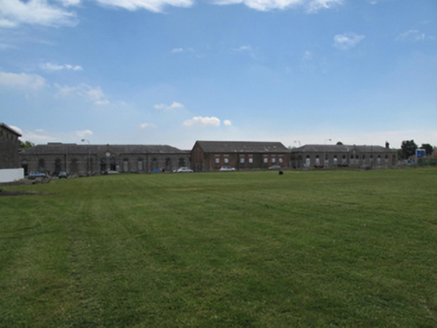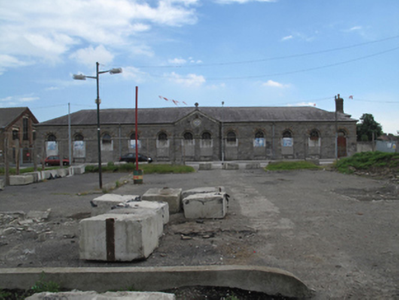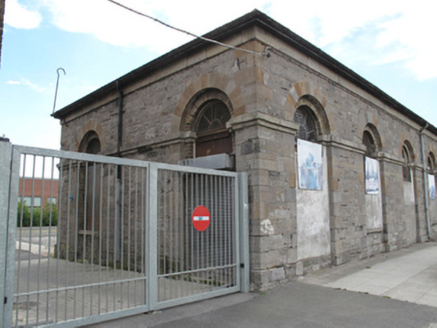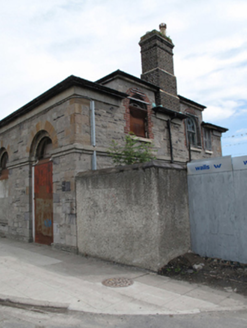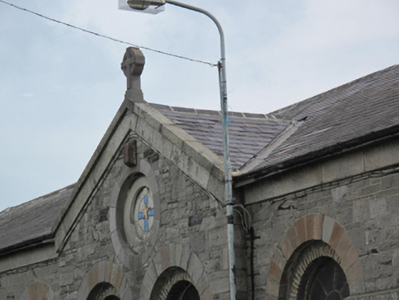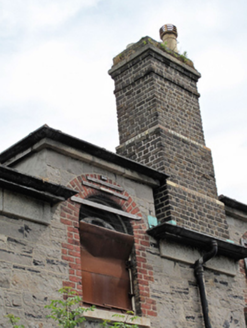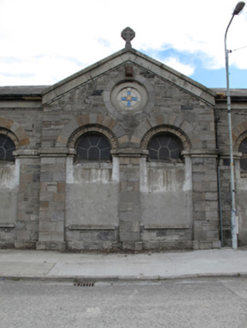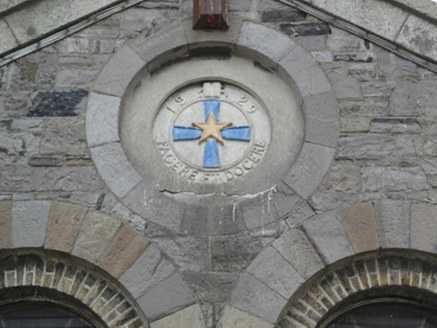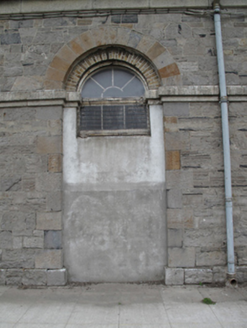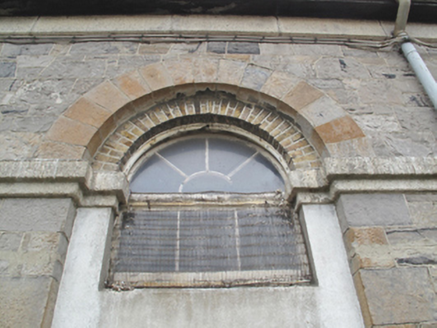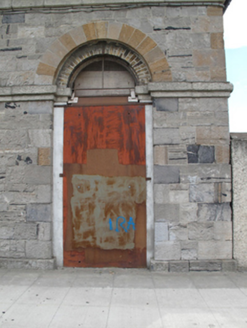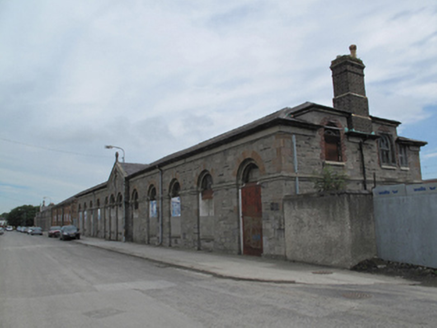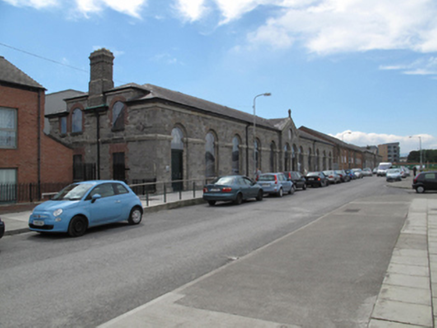Survey Data
Reg No
50080095
Rating
Regional
Categories of Special Interest
Architectural, Historical, Social
Previous Name
Richmond Barracks
Original Use
Barracks
Historical Use
School
Date
1830 - 1870
Coordinates
312217, 233270
Date Recorded
18/06/2013
Date Updated
--/--/--
Description
Detached twelve-bay single-storey former barracks, built c.1850, having central two-bay pedimented entrance breakfront to front (west) elevation, and half-dormer attic to south elevation. Later in use as social housing, subsequently in use as school, currently disused. Hipped slate roof with cut stone eaves course, having moulded brown brick chimneystack flanked by pair of hipped dormer windows to south elevation, parapet to breakfront having cut granite coping and carved limestone cross finial. Cast-iron rainwater goods. Snecked cut limestone walls over limestone plinth, having cut granite impost course and circular blind opening to pediment having carved stone crest ‘1929 / FACERE ET DOCERE’. Round-headed recessed window openings with cut granite sills to front and north elevations, having cut limestone voussoirs, cut granite impost blocks and yellow brick reveals. Round-headed window openings to dormer windows, having cut stone sills and red brick block-and-start surrounds. All openings blocked or partially blocked, timber sash windows evident. Round-headed recessed blocked door openings to front and north elevations, having cut limestone voussoirs, granite impost blocks and yellow brick reveals. Located on street adjacent to two surviving barracks buildings, addressing the site of recently demolished Saint Michael’s Estate housing complex.
Appraisal
This building and the two adjacent barracks buildings were part of the Richmond Barracks complex dating from 1814, and form a focal point in the streetscape. The historic significance of the barracks is well-documented, all those arrested after the 1916 Rising were taken to Richmond Barracks for processing, including the leaders, who were held in the gymnasium prior to the court martial. Following the establishment of the Irish Free State in 1922, the barracks were taken over by the Irish Army and renamed Kehoe Barracks. In 1924 the barracks were given over to Dublin Corporation and converted to provide social housing. Kehoe Square was demolished in 1969 to allow the construction of Saint Michael’s Estate housing which was demolished in 2013. The three surviving barracks buildings were in use as a Christian Brothers’ school until the late twentieth century. The design of the barracks is grounded in long-established traditions with a symmetrical plan and classically-derived proportions. The construction in cut limestone is typical of the solidity and traditional materials favoured by the military in the nineteenth century. The stone and brick detailing are worthy of note and add aesthetic appeal. Although some windows have been lost, much original fabric is retained. The composition and scale of the building create a pleasing formal facade, making a positive contribution to the area. Both this building and the adjacent former barracks to the north will be restored as a 1916 commemorative project.
